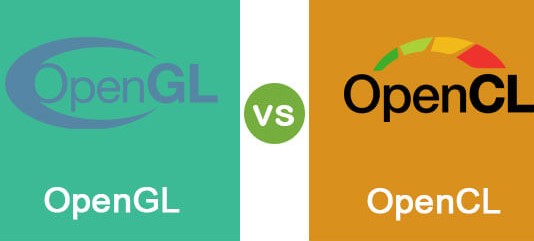When it comes to harnessing the power of modern graphics cards for computation and visualization, two essential technologies stand out: OpenCL and OpenGL. While their names may sound similar, they serve distinct purposes and are crucial in various fields, from scientific simulations to video game development. In this blog post, we’ll explore the differences between OpenCL vs. OpenGL to help you understand their roles and applications.
Understanding OpenCL
OpenCL, or Open Computing Language, is a framework for heterogeneous computing developed by the Khronos Group. Its primary purpose is to enable developers to write code that runs efficiently on various GPUs, CPUs, and other accelerators, regardless of the hardware vendor.
Use Cases for OpenCL:
- General-Purpose Computing: OpenCL is designed for general-purpose computing, making it suitable for tasks like scientific simulations, image processing, and cryptography.
- Parallel Processing: It excels at parallel processing, where large datasets or complex calculations can be split into smaller tasks and executed concurrently.
- Vendor Neutrality: OpenCL is vendor-neutral, meaning it can run on GPUs from different manufacturers, such as AMD, NVIDIA, and Intel.
Unlocking Mobile Potential: The Power of Software Development Kits (SDKs)
Exploring OpenGL
OpenGL, or Open Graphics Library, is an API (Application Programming Interface) for rendering 2D and 3D graphics. It’s used extensively in video game development, computer-aided design, and other applications that require real-time rendering.
Use Cases for OpenGL:
- Graphics Rendering: OpenGL’s primary purpose is to render graphics, including complex 3D scenes, textures, and visual effects.
- Interactive Applications: It’s commonly used in video games, architectural visualization, and virtual reality applications where real-time rendering is crucial.
- Cross-Platform Compatibility: OpenGL is available on various platforms, including Windows, Linux, macOS, and mobile devices.
Key Differences
Now, let’s summarize the key differences between OpenCL and OpenGL:
- Purpose: OpenCL is designed for general-purpose computing and parallel processing, while OpenGL focuses exclusively on graphics rendering.
- Hardware Neutrality: OpenCL is vendor-neutral and can run on different GPUs and CPUs, while OpenGL is typically associated with graphics cards and their proprietary drivers.
- Tasks: OpenCL is suitable for tasks like scientific simulations and data processing, while OpenGL excels in rendering 2D and 3D graphics.
- Development: Developing applications with OpenCL often requires expertise in parallel programming and computational algorithms, while OpenGL is essential for graphics programmers and game developers.
Rust vs. Go: A Head-to-Head Comparison for Modern Developers
Here are some FAQS based on OpenCL and OpenGL
- Does OpenCL use OpenGL?
- OpenCL and OpenGL are separate APIs with distinct purposes. However, they can be used together in certain applications. For example, OpenCL can perform complex computations, and the results can be visualized using OpenGL for rendering.
- What is the difference between OpenCL and OpenGL and Vulkan?
- OpenCL is primarily for general-purpose computing and parallel processing. OpenGL is for graphics rendering, and Vulkan is a low-level graphics and compute API. While they can work together, their main focuses differ.
- What is OpenCL used for?
- OpenCL is used for a wide range of tasks, including scientific simulations, image and video processing, machine learning, cryptography, and any computation-intensive task that benefits from parallel processing.
- When do OpenCL and OpenGL work together?
- OpenCL and OpenGL can work together when an application requires both parallel computation and real-time graphics rendering. OpenCL handles the computation, and OpenGL visualizes the results, making them a powerful combination in fields like scientific visualization and simulations.
In summary, OpenCL and OpenGL are two distinct technologies with specific roles. OpenCL is your go-to choice for parallel computing and general-purpose GPU acceleration, making it valuable in scientific research and computation-intensive tasks. In contrast, OpenGL is essential for graphics rendering, making it indispensable in video games, simulations, and visualizations.
Understanding the differences between OpenCL and OpenGL is crucial when choosing the right technology for your project. Depending on your application’s requirements, you may even find situations where using both technologies in tandem can unlock new possibilities in graphics and computation.

